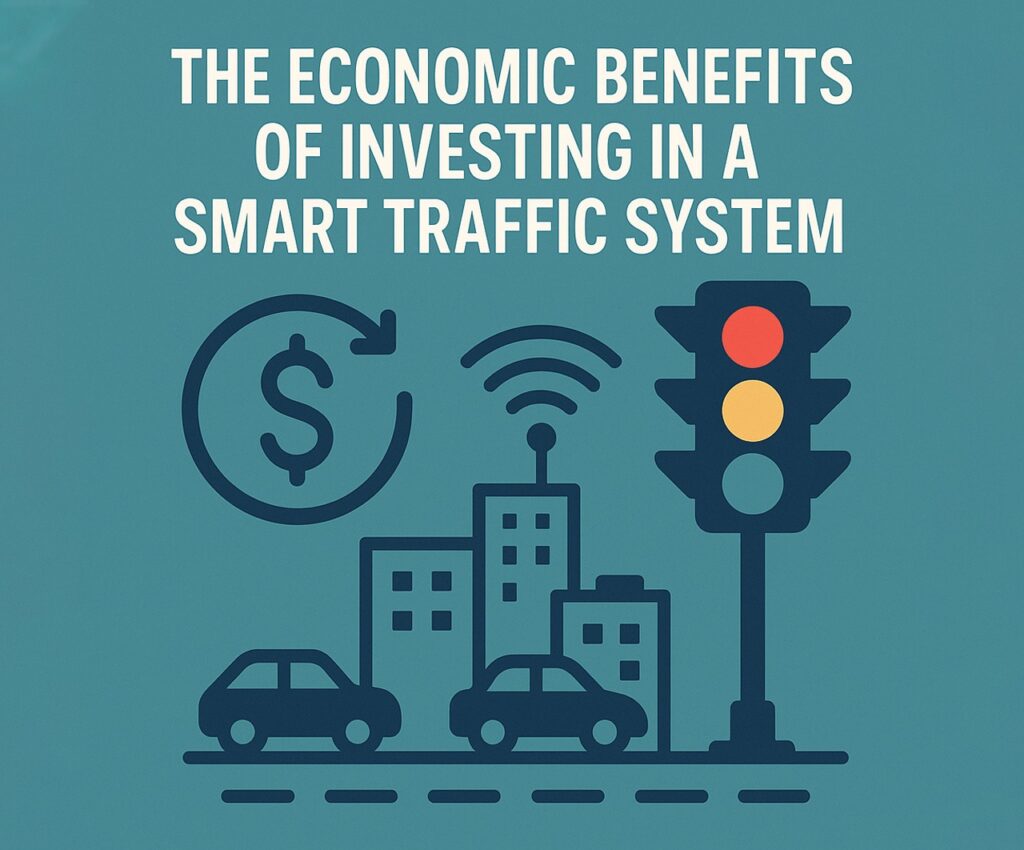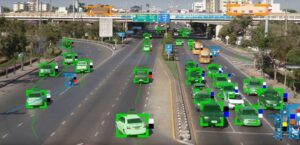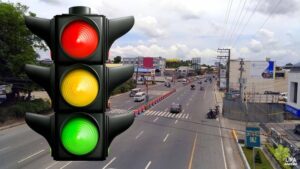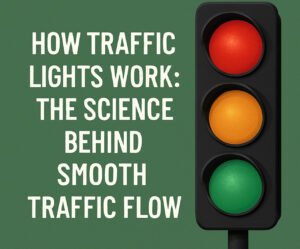Cities are changing fast. As urban populations swell and transportation needs become more complex, one thing is clear: outdated infrastructure is holding us back. That’s why more cities are turning to a smart traffic light system, integrated smart traffic management, and comprehensive smart city traffic management system solutions to modernize mobility. These intelligent systems aren’t just about easing congestion—they’re unlocking major economic gains for cities ready to embrace the future. Know more..
Time is Money: Reducing Commuter Delays
Every minute a car sits idle in traffic costs money. Think fuel, productivity, and even missed business opportunities. A well-executed smart traffic light system reduces delays by adapting in real time. Instead of pre-set signal cycles, lights adjust dynamically based on traffic flow.
In practice, this means faster commutes, shorter delivery times, and more time for people to work, shop, or enjoy life. Less gridlock equals more economic activity, and cities with smart traffic management gain a clear edge.
Fuel Efficiency and Cost Savings
Vehicles burn fuel inefficiently in stop-and-go traffic. A smart city traffic management system reduces the need for frequent braking and idling, cutting fuel consumption dramatically. Fleet operators—from delivery companies to public transportation—stand to save millions.
A city-wide smart traffic light system could lower fuel costs by up to 20% for commercial fleets. That’s real money going back into businesses rather than gas tanks. Multiply that across thousands of drivers, and the economic case is undeniable.
Business Productivity and Workforce Mobility
Delays cost businesses more than time—they cost money. Employees stuck in traffic are less productive, more stressed, and more likely to show up late. By using smart traffic management to improve commute times, cities support a healthier, more punctual workforce.
Plus, efficient mobility attracts business investment. Companies are more likely to set up operations in cities where people and goods can move freely. A well-optimized smart city traffic management system creates an environment where economic opportunity thrives.
Real Estate Development and Property Values
Location is everything in real estate. And one major factor that determines location value is accessibility. A smart traffic light system reduces bottlenecks and improves accessibility across neighborhoods.
Developers are more inclined to invest in areas where traffic flows efficiently. That leads to revitalization, higher property values, and increased local tax revenues. By deploying smart traffic management, cities unlock real estate potential that’s been sitting idle behind traffic jams.
Attracting Tourism and Events
Tourism is a major economic engine in many urban areas. But visitors won’t come back to a city where the traffic is a nightmare. A smart city traffic management system ensures smoother flow around tourist attractions, airports, and hotels.
Event planning also becomes easier when traffic is predictable. Whether it’s a sports event, concert, or conference, good mobility means more attendees, smoother logistics, and greater economic return.
Lower Infrastructure Costs Over Time
It may seem counterintuitive, but investing in a smart traffic light system can actually reduce long-term infrastructure spending. Why? Because smarter signals stretch the lifespan of roads by reducing wear and tear caused by constant braking and acceleration.
Plus, with data from a smart city traffic management system, cities can make better decisions about where to build or expand roads. This avoids unnecessary spending and focuses resources where they matter most.
Revenue Through Data Insights
Data is currency in today’s digital economy. A smart traffic management platform generates massive amounts of data on how people move through a city. That information can be used for:
- Strategic urban planning
- Advertising and marketing insights
- Improving public transit
- Creating better emergency response protocols
Cities that harness these insights create new revenue streams and attract partnerships with tech companies eager to innovate.
Environmental and Health Savings
There’s an economic upside to cleaner air. Fewer emissions mean fewer health issues related to pollution. Asthma, heart disease, and other traffic-related conditions cost billions in healthcare every year.
With a smart traffic light system, emissions drop, noise pollution decreases, and residents enjoy healthier lives. That translates into fewer sick days, lower healthcare spending, and a more robust economy overall.
Better Public Transport Integration
Public transportation is essential for economic equity. A city with good public transit allows more people to access jobs and services. But buses and trains are only as good as the roads they rely on.
Through smart traffic management, buses can be given signal priority, reducing delays and making public transit more attractive. And when a smart city traffic management system coordinates between modes—cars, buses, trains, bikes—everyone moves better.
The result? Higher public transit usage, less congestion, and broader access to economic opportunity.
Case Studies That Prove the Value
- Barcelona implemented a city-wide smart city traffic management system that cut travel time by 21%, increased public transport reliability, and boosted local commerce.
- Pittsburgh deployed an AI-based smart traffic light system that reduced travel time by 25% and emissions by 21% in pilot areas.
- Singapore uses a dynamic smart traffic management platform to balance traffic, monitor flow, and prioritize logistics.
These cities saw real returns—not just in smoother commutes, but in dollars saved and generated.
Long-Term Economic Resilience
A resilient city is one that can adapt quickly. Whether it’s responding to a natural disaster, a major event, or changes in population, mobility is key. A smart traffic light system gives cities the flexibility to reroute and respond in real time.
With a strong smart traffic management infrastructure, cities can adjust during emergencies without collapsing their transport grid. That resilience protects the economy and builds trust with residents and investors alike.
Conclusion: Smart Traffic is Smart Economics
Investing in a smart traffic light system, city-wide smart traffic management, and a robust smart city traffic management system isn’t just a tech upgrade—it’s an economic strategy. From reduced costs and increased efficiency to healthier communities and higher revenues, the ROI is massive.
Cities that prioritize intelligent traffic systems are making a choice to grow, thrive, and compete. The data is clear, the tools are available, and the need is urgent. Forward-thinking cities should act now—not just to untangle traffic, but to build an economy that moves at the speed of innovation.





